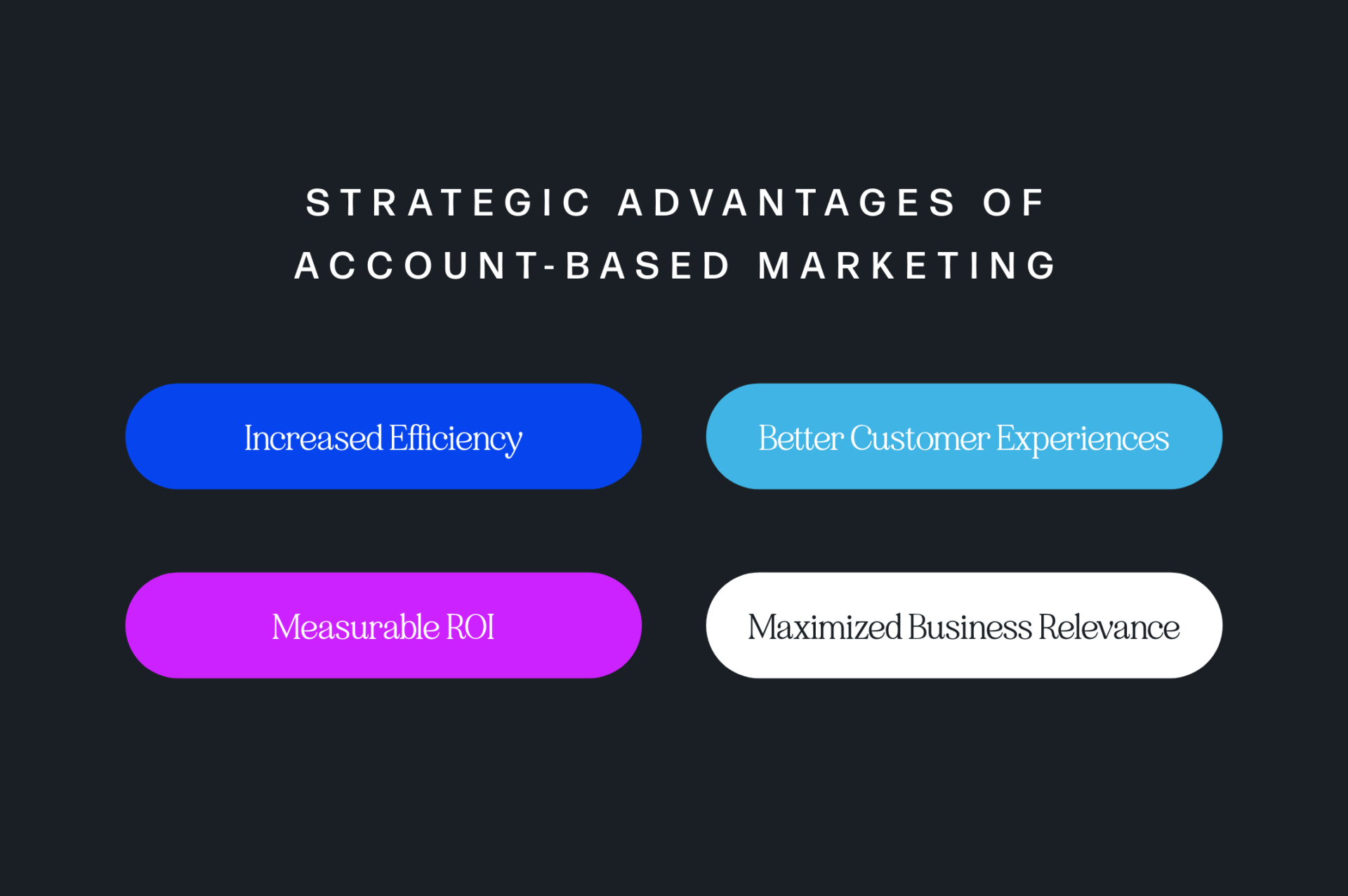Account-Based Marketing (ABM) has become a powerful strategy for healthcare device companies looking to target high-value accounts with precision. Unlike traditional marketing, ABM focuses on personalized engagement with key decision-makers in hospitals, clinics, and healthcare networks.
What is Account Based Marketing
Account-based marketing (ABM) is a strategic approach that focuses on specific accounts, rather than a broad audience. It’s a B2B marketing strategy that involves aligning sales and marketing to target high-value accounts through personalized engagement and tailored ad campaigns.
The Benefits of ABM:
- Increased Efficiency: Focusing on high-value accounts makes marketing efforts more targeted and effective, reducing wasted resources.
- Better Customer Experiences: Personalized marketing means more meaningful interactions and stronger relationships with key accounts.
- Measurable ROI: ABM allows for precise tracking of marketing efforts, making it easier to measure return on investment.
- Maximized Business Relevance: In a competitive market, ABM helps businesses stand out by delivering highly relevant and personalized content to their highest-value accounts.

Why is ABM aligned with the Healthcare Device Industry
The healthcare device industry operates within a highly specialized and regulated market where purchasing decisions involve multiple stakeholders and long sales cycles. An account based marketing strategy fits perfectly in this environment by allowing healthcare device companies to deliver targeted messaging, nurture relationships with key decision-makers and demonstrate the value of their solutions. By focusing on high-value accounts, ABM ensures marketing efforts are efficient, targeted and contribute directly to revenue growth. Providing personalized engagement and in-depth educational content helps build trust, a key in the healthcare industry.
Here are the high-level steps to implement ABM in the healthcare device industry.
1. Define and Prioritize High-Value Accounts
Start by identifying and prioritizing healthcare organizations that fit your ideal customer profile. Consider factors like hospital size, budget, specialty, and current equipment usage to measure your ABM efforts are targeted at the right accounts.
2. Map Key Decision-Makers and Stakeholders
Healthcare purchasing decisions involve multiple stakeholders- procurement officers, department heads, physicians, and administrators. Develop detailed personas for each key decision-maker and ensure that sales reps collaborate with marketing to tailor messaging and outreach accordingly.
3. Personalize Content for Each Account
Customized content is crucial in ABM. Develop case studies, whitepapers, and videos that address specific pain points of each target account. Show how your medical devices improve patient outcomes, enhance efficiency, and comply with industry regulations.
4. Engage Through Multi-Channel Outreach
A successful ABM campaign incorporates multiple touchpoints, including:
- Personalized email campaigns
- LinkedIn outreach
- Direct mail with product samples or brochures
- Webinars tailored for key accounts
- Retargeting ads with relevant messaging
5. Align Sales and Marketing Teams
ABM requires sales and marketing teams to work together. Ensure both teams share account engagement insights, tailor messaging based on sales conversations, and work together to move accounts through the sales funnel.
6. Create Account-Specific Landing Pages
Create dedicated landing pages for each high-value account or industry segment. These pages should have tailored content, testimonials from similar healthcare organizations, and personalized CTAs to encourage conversions.
7. Leverage Customer Advocacy and Case Studies
Healthcare professionals trust peer recommendations. Develop case studies featuring successful implementations of your medical devices, and involve sales reps to gather customer testimonials. Encourage happy customers to provide testimonials or participate in industry panels to amplify your credibility.
8. Measure and Optimize ABM Campaign Performance
Track the performance of your account-based marketing initiatives. Key metrics to monitor:
- Engagement rates on personalized content
- Number of meetings scheduled with decision-makers
- Conversion rates from targeted accounts
Use these insights to refine your strategy and improve future campaigns.
Final Thoughts
Account based marketing is a game changer for healthcare device companies to build relationships with high-value accounts. By using personalized content, data-driven targeting, and multi-channel engagement, your company can drive more conversions and long-term partnerships in the healthcare industry.
Need help developing an ABM strategy tailored to the healthcare device market? Brandastic can help you create targeted campaigns that deliver results. See our Healthcare Industry Case Studies at this link: https://brandastic.com/work/.













